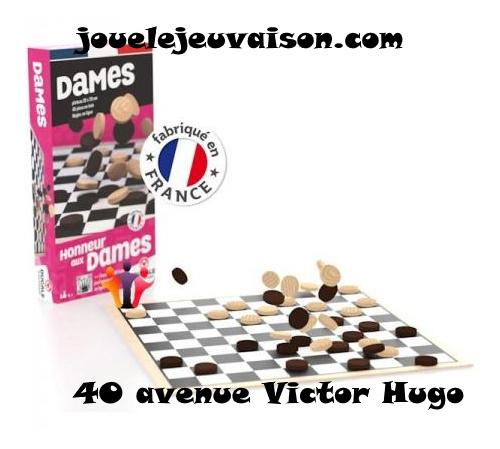Hello everyone!
Today we're going to talk about Checkers!
Move your pieces, 2 players from 6 years old for 10 to 20 minutes, to capture all your opponent's pieces!
The two players are face-to-face, the checkerboard between them. For each player, the square on the right on the first line of the checkerboard is light-colored.
Draw lots to find out which player has the light-colored pieces. He starts the game. Each player places all his pieces on the dark-colored squares, on the first four lines.
Each player in turn makes either a move or a capture. When he can make a capture, he is obliged to do so and does not make a move.
The player moves one of his pawns one square, diagonally, towards the other player. The arrival square must be empty.
If the pawn reaches the last line, it turns into a "queen". A second pawn of the same color is placed on top of it.
Instead of moving one of his pawns, the player can move one of his queens. He moves it as many squares as he wants, diagonally, in the direction of his choice. The arrival square must be empty and no piece must be in the path of the queen.
Pawns and queens only move on dark-colored squares. If a player touches one of his pieces, he must play this piece, if possible. As long as he does not drop it, he can change his move.
A pawn can take a piece from the other player by jumping over it, provided that it arrives in an empty square, next to the jumped pawn. The jump can be made in any direction. The jumped piece is removed from the board.
The queen captures like the pawn but has the advantage of being able to cross several empty squares.
It can stop on the square of its choice if it has several empty arrival squares. If several jumps in a row are possible, the player must make as many as possible. Each jump can be made in a different direction.
For example, three pawns must be taken in preference to two pawns or two queens. In the event of a numerical tie, it can be chosen.
A piece can only be jumped once. It is forbidden to remove the pieces as the jumps progress; they must all be removed after the last jump.
If a pawn reaches the end of its capture on a square on the last line, it becomes a queen. If it only passes, it remains a pawn.
A player can force the other player to replay his turn if the latter forgot to capture. He can also let it happen, without penalty.
A player has lost the game when he has no more pieces left on the board or if he can no longer move any pieces.
A player can also abandon the game if he feels he has no chance of winning, or even of equalizing.
A draw is when a player proposes it and the other player accepts it, when it is no longer possible to make a capture, or when the same position of the pieces occurs for the third time.
Have a good day and good game ;)




Add a comment